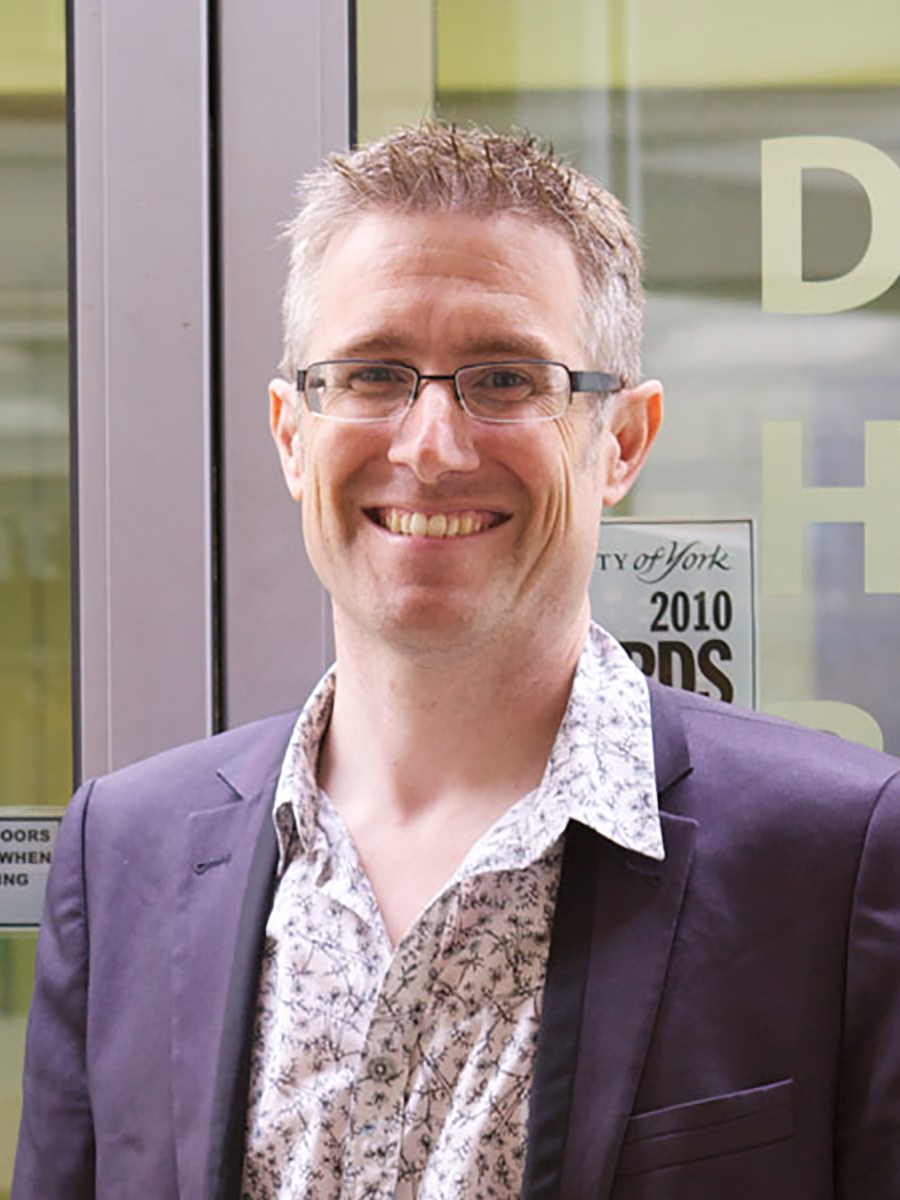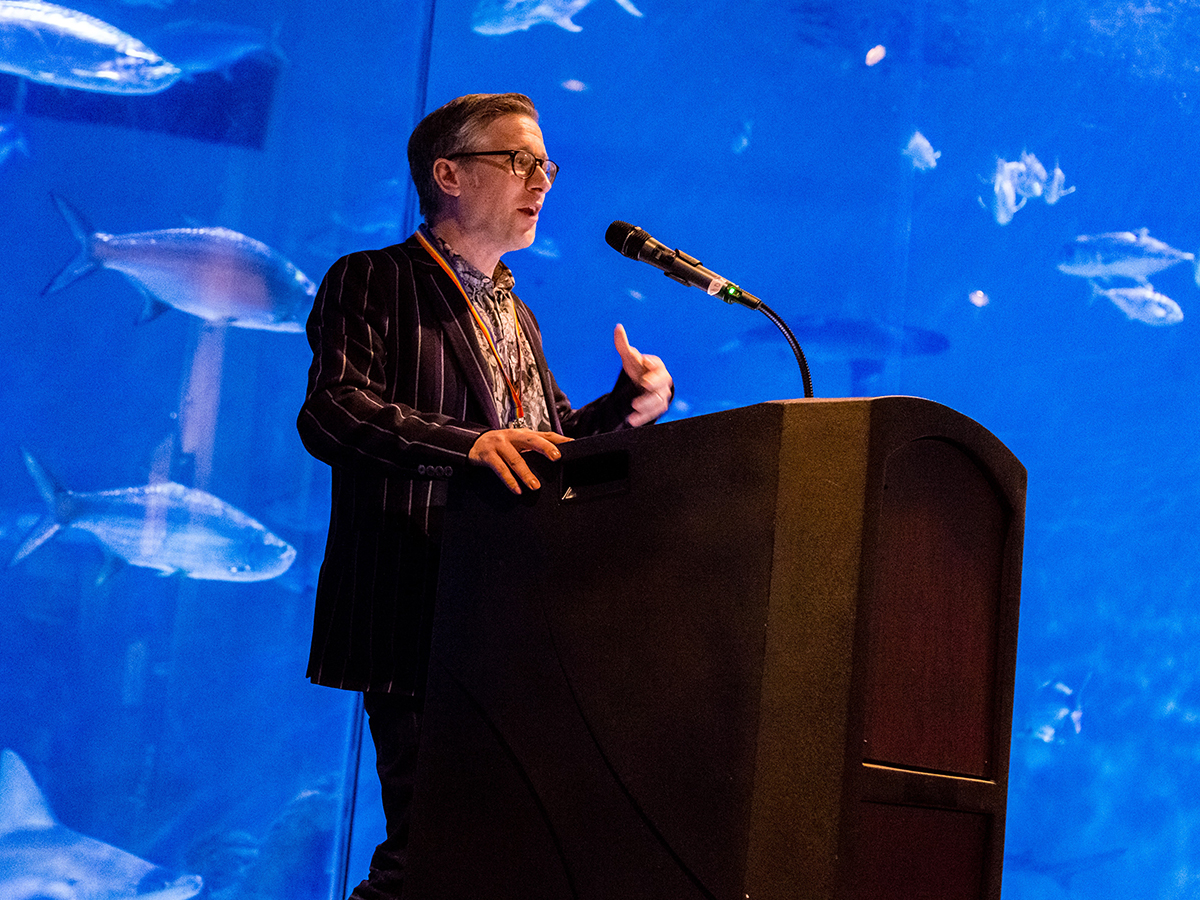Hidden diversity steps out from the closet

Picture: © Royal Society of Chemistry
Professor of chemistry at the University of York and a member of our Inclusion and Diversity Committee, David Smith shares his thoughts on why the scientific community has work to do in supporting current and aspiring LGBT+ scientists.
I’m a gay scientist – a passionate chemist and a proud member of the LGBT+ (lesbian, gay, bisexual, transgender, plus) community. In recent years, I have often spoken and written about the lives and experiences of LGBT+ scientists, including my own, but some of the responses still shock me:
‘You are mistaking us for people who give a sh*t – Your sexuality is NOT important vis-a-vis your job.’
Imagine replacing the word ‘sexuality’ with ‘identity’ – how would that make you feel in your place of work? This kind of response, albeit usually phrased much more diplomatically, is sadly all-too-common.
Scientists seem particularly prone to taking the ‘meritocratic’ view that they judge each other only on their ‘achievements’ – their publications, patents, grants, group sizes, citations etc. Although these metrics might appear objective – ‘scientific’ even – they take no account of the backgrounds and lived experiences of individuals, no measure of the different environments they work in, or the different challenges they have faced.
There is increasingly a perception that because minority rights have been on the agenda for some time, the world must have moved beyond discrimination, and that as equality legislation has begun to roll out to minority groups, there is no longer any need to talk about the issues they face. Unfortunately however, discrimination, both in wider society and in science, remains widespread – women, ethnic minorities, the disabled, LGBT+ and more all still struggle for equity of treatment.
In the academic science environment, individual group leaders have significant control over the junior researchers they supervise. Indeed, a single individual can make or break the careers of the young scientists working with them, through the support they give and the references they write. Sadly, the majority of supervisors in senior positions are non-diverse. Studies have shown that their conscious and unconscious biases can adversely affect references written for female researchers. Furthermore, they can create research environments that are neither supportive nor inclusive to those with diverse needs.
One of the unique features of LGBT+ diversity is that it can easily remain hidden. Given the obviously tough time experienced by those scientists whose diversity is clearly visible, is it any surprise that many LGBT+ individuals choose to hide their true identities? In many cases, they have very little idea how the person in charge of their future prospects will react. Creating open and inclusive environments is vital to encourage hidden diversity to step out from the closet.
Indeed, a major survey of around 1500 LGBT+ people working in STEM (science, technology, engineering and maths) found they were much more likely to be ‘out’ to their friends and family than they were to their work colleagues. These individuals live double lives, concealing their true identities from those they work with, making it difficult to form meaningful work relationships, contribute effectively to the teams that are so vital in modern scientific research, or even simply chat over a coffee about what they did at the weekend. This is massively damaging on a personal level, but also to the teams they work in and the science they do.
Intriguingly, the ‘hidden diversity’ workplace effect is subject-specific – social scientists are significantly more likely to be ‘out’ at work than those working in physical sciences or engineering – clear evidence that in the prevailing STEM environment, many LGBT+ people feel the need to hide who they really are. This is a damning indictment of the workplace environments scientists are creating, and should make us think long and hard about how we can ensure that everybody feels included and supported.
The survey also made clear that people are more likely to ‘come out’ at work if they know their workplace is safe and welcoming, and less likely to come out if their workplace is unsafe or hostile. Surprisingly, however, people are even less likely to be out if they do not know how their workplace will respond. It is therefore vital for workplaces to clearly signal inclusivity, and for individuals, especially in senior positions, to be visible, either as diversity advocates, or ‘out’ LGBT+ staff members themselves. In my own career, I did not personally come out until after I had secured my own academic position. Ultimately, I came out in a very visible way because on a personal level I was exhausted by lying, but on a broader level, I wanted younger LGBT+ scientists to know that it was ok, that they could succeed, and there were people like them, who would support them.

David Smith speaking at our 'chemistry stories' event at the ACS Spring Conference Picture: © Royal Society of Chemistry
It is therefore a source of much personal inspiration and joy that young scientists are increasingly proud of their identities and happy to ‘own’ their place in the STEM community as queer scientists. This partly reflects broader shifts in society, but also indicates the bravery of the next generation and their thirst for change. Social media has been massively empowering in democratising the voice of science – with hashtags such as #LGBTscience and #500QueerScientists, and online events like LGBTSTEM Day, encouraging young scientists to share their stories, discuss their science, and build visibility. The vibrant one-day ‘LGBT STEMinars’, which have taken place in the UK every January for the last three years have built a warm and supportive community. Similar activities in the U.S. are also empowering LGBT+ scientists.
Importantly, there are many more scientists that are young and diverse than there are non-diverse senior scientists. As passionate, enthusiastic and diverse young STEM workers find their voice, this genuinely changes the scientific conversation. If the ‘old guard’ are not listening, they will end up left behind, and in science more than many other jobs, being at the cutting-edge, and working with the best talent, is essential.
Not only does this open and visible approach benefit LGBT+ scientists, it will have huge benefits for other, more visible minority groups facing discrimination. By standing proud together, we can hopefully begin to sweep away the historic attitudes that have privileged a small group of individuals. This is the very essence of ‘Pride’, and until there is true equality of opportunity and equity of outcome, it will still be needed.
In addition to this ‘bottom-up’ wave of activism from young scientists, the learned societies are increasingly supporting diversity from the ‘top-down’. Importantly, the Royal Society of Chemistry and Institute of Physics commissioned a major new survey focussed on the experience of LGBT+ scientists in the UK, through their newly founded LGBT+ Physical Sciences Network – the results should report in early 2019 – they should be fascinating.
In spite of my optimism about the new wave of LGBT+ scientists taking ownership of their identities, we must also remember that beyond our own privileged positions, such as in the UK, many scientists work in far less supportive environments. This includes countries where LGBT+ people have no rights, where it is illegal to speak about being gay, or where the act of homosexuality can even carry a death sentence. Visible and supportive LGBT+ scientists are vital for the morale of scientists working in such repressive environments.
Only when all people feel comfortable to be themselves in the workplace, without any fear of discrimination, will global science truly be able to thrive. Even more importantly, only then will we stop wasting so much human capital.